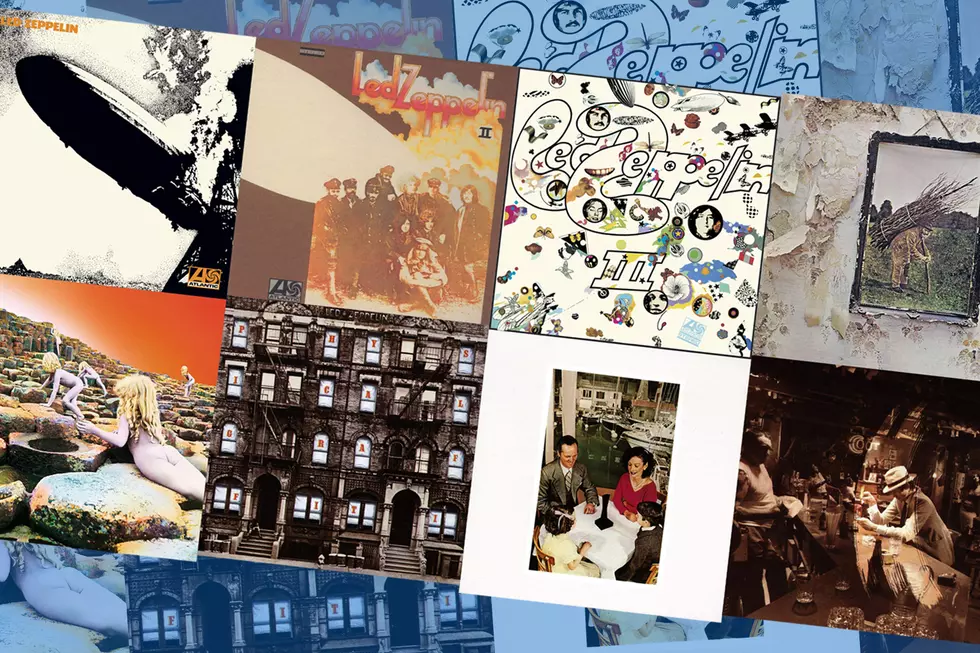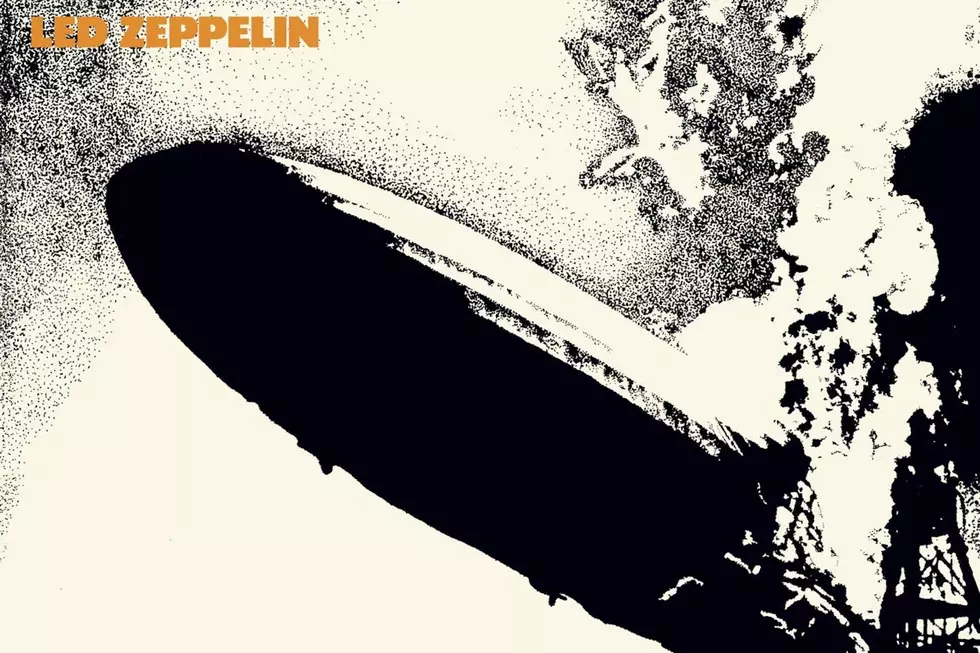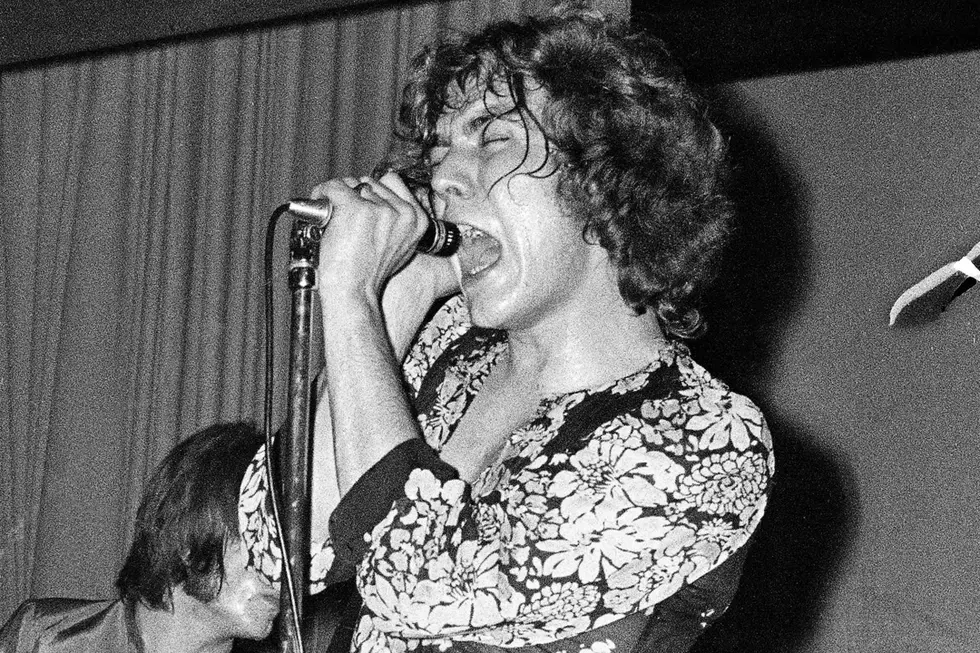
Underrated Led Zeppelin: The Most Overlooked Song From Each Album
Led Zeppelin defined and perfected ’70s hard rock. From “Whole Lotta Love” to “Stairway to Heaven” to “Fool in the Rain,” the achievements of Robert Plant, Jimmy Page, John Paul Jones and John Bonham have endured generations.
Though the band's best-known songs remain vital, they've still been played to death. The deep cuts are just as interesting: Next time you go to spin “Rock and Roll,” skip the warhorse and dig into something more unexpected. From Led Zeppelin to the posthumous Coda, here are the most overlooked cuts from each of their nine studio albums.
“Black Mountain Side”
From: Led Zeppelin (1969)
Led Zeppelin swaggered into the late ’60s with “Good Times, Bad Times.” The opening track from the band’s debut seemed to show a fully formed group. It told listeners with extreme authority, “We are already unparalleled rock gods!” So much of that first album turned formative blues tunes and made them louder or faster or more bombastic. But the instrumental “Black Mountain Side” unveiled a radically different sound: Page dug into an old folk song, experimented with an alternate tuning and blended his acoustic guitar with tabla. The results introduced the world to a misty, rambling aesthetic somewhere among Celtic lands, North African deserts, Indian landscapes and Middle Earth. The folky, acoustic-leaning Led Zeppelin III came as a shock to many fans — but not to those who found the magic in “Black Mountain Side.”
“Bring It on Home”
From: Led Zeppelin II (1969)
This blues rave-up comes with a wonderfully deceptive arrangement. The final cut on the second album eases into a lazy, simple tribute to Sonny Boy Williams. Then, nearly two minutes in, it blooms into a hybrid of acid-blues and early heavy metal. With every member lighting up the romp (Page times two, given the double-tracked guitar), the quartet’s twist on a Willie Dixon composition does two things: It serves as an exemplary cap-tip to the style they spent two LPs exploring before III, and it previews the world-conquering stomp that made them kings of ’70s rock.
“That’s the Way”
From: Led Zeppelin III (1970)
Page and Plant unlocked fresh innovations on a trip to Wales in 1970. For the guitarist, this track showed just how restrained he could be with a gentle interplay among acoustic instruments: 12-string and steel guitars, mandolin and dulcimer. And the singer became a truly meditative lyricist on "That's the Way." After two records packed with sexual innuendo (and sometimes sex without innuendo), Plant wrote a song about a young friendship broken apart by parents. It could be about the divide between hippies and the straitlaced mainstream — or about racism or classism or homophobia. Whatever the meaning, it’s poetic.
“Four Sticks"
From: Led Zeppelin IV (1971)
You won’t find another classic rock album as stacked as Zep’s fourth. Almost every song remains a rock radio staple, but the album might be even better experienced top to bottom. Certainly, the unhinged pulse and push of “Four Sticks” is underrated on every level. The tricky time signatures somehow lock together thanks to Bonham’s distinctive skills (and ability to play with, well, four sticks). The unrelenting groove of the drums, bass, keys and electric guitar provides a wave for a howling Plant to ride. It’s everything freaky and menacing about a band that reveled in being freaky and menacing.
“The Ocean”
From: Houses of the Holy (1973)
Half of Zeppelin's die-hard fans argue that only Houses of the Holy can compete with IV for pure full-LP magic — the other half typically claim it lacks unity. This makes underrated tracks scant or overwhelming. Whatever your take, it’s doubtful the final song on Houses of the Holy is your favorite. Wait, it is? Bold assertion, but you're smart enough to see this as a no-nonsense blend of electric blues and chugging swamp metal with both a Top 10 Bonham beat and Page riff. This one gets bonus points for the miraculous time change and stylistic U-turn at 3:18. And more bonus points for later becoming a perfect Beastie Boys sample (see “She’s Crafty”). And still even more bonus points for the absurdly cool Bonham count in that can be barely heard before the track, as he says, “We’ve done four already, but now we’re steady, and then they went 1, 2, 3, 4 ... "
“The Rover”
From: Physical Graffiti (1975)
“The Rover” is the most underrated cut from Zep’s massive mid-’70s double LP, and it's also a candidate for the band’s top underrated song overall. The Page and Plant cowrite began as an acoustic track, and the band kicked it around for a few years. When it finally showed up here, it had everything a Zeppelin song should: It's towering but nuanced, wild but tight, bluesy but with a delicately melodic touch. But Page’s guitar solo, full of furious runs and a squealing climax, elevates the jam from great to epic.
“Royal Orleans”
From: Presence (1976)
When fans rank their favorite Led Zeppelin songs, Presence tracks often gets kicked to the back of the line. Often this is for good reason. But the album’s lesser tracks suffer in comparison to the masterpieces “Achilles Last Stand” and “Nobody's Fault but Mine.” Go spin “Royal Orleans” and discover how the band could reinvent itself in three minutes. Written by all four members, the song outlines the (maybe) true story of Jones’ adventures with drag queens in the French Quarter while staying at the Royal Orleans Hotel. The musical accompaniment to Plant’s tale features a New Orleans groove that feels like a Meters’ A-side, a nod to Stevie Wonder and an important step toward the rock-funk sound bands from Talking Heads to Red Hot Chili Peppers would later adopt.
“Carouselambra”
From: In Through the Out Door (1979)
Disco, prog, funk and heavy metal in one glorious, 10-minute mess? For any other band, this proprietary blend would become a disaster. For Zeppelin, in the final days of the group’s run, this experiment became a genuine thrill during a period that produced very few jolts. Listed as a cowrite by Page, Plant and Jones, the song leans heavily on Jones’ krautrock-meets-P-Funk keyboard riffs and vamps. Many detractors maintain the length makes it boring. But if you’re gliding between half-dozen genres, fit in the only studio recording of Page’s famous Gibson double-neck guitar, let Plant deliver one of his strangest lyrics and give Bonham plenty of time to go full Bonzo (check the eight-minute mark), you need at least this much time.
“Wearing and Tearing”
From: Coda (1982)
Yes, there are reasons Zep left the tracks on Coda on the cutting-room floor in the ’70s. This means that, like any odds-and-ends collection, Coda ranges from masterful to mediocre. The true jaw-on-the-floor revelation: Zep can play punk! Okay, “Wearing and Tearing” would never be confused for “Anarchy in the U.K.,” but the song's gallop has a dash of the Damned, a little Motorhead, just the faintest whiff of Judas Priest. One of the gods’ final statements proved they could slum it with leather-clad upstarts — be they punks or New Wave of British Heavy Metal acts.
The Best Song From Every Led Zeppelin Album
More From Ultimate Classic Rock









